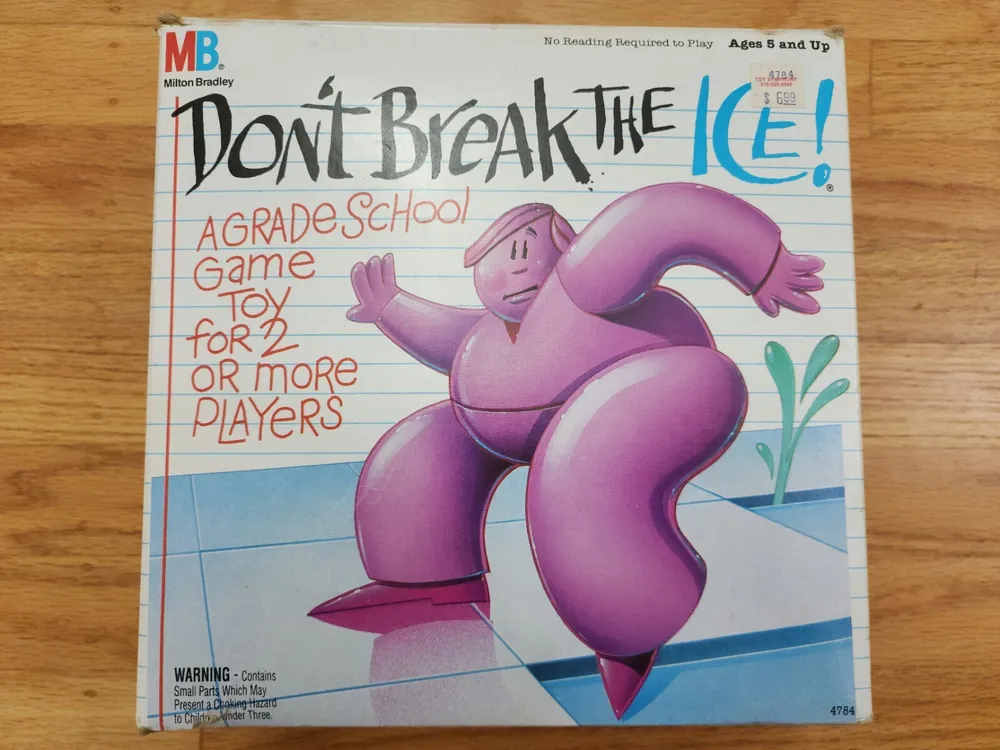Don’t Break the Ice (1968)
Don’t Break the Ice
Don’t Break the Ice is a children’s tabletop game for two to four players ages 3 and up. It was first marketed by Schaper Toys in 1968 and was sold to Hasbro subsidiary Milton Bradley in 1986. The game is still in production, and special editions were released in conjunction with the films Frozen (2013) and Frozen II (2019).
Why is Don’t Break the Ice Popular?
Don’t Break the Ice is a popular game for children due to its simple Gameplay Mechanics of Don’t Break the Ice and the excitement it generates as players take turns tapping out the blocks of ice, trying not to make the penguin fall through. It is also significant as a classic tabletop game that has been enjoyed by generations of children since its release in 1968.
Game Components of Don’t Break the Ice
How To Setup Don’t Break the Ice
To set up the game, place the ice tray frame upside down and attach the four ice tray legs to the bottom. Load all the ice blocks into the tray, ensuring the smooth side touches the table. Once all blocks are in place, turn the ice tray frame upright and position Phillip the Penguin on the large ice block.
Gameplay Mechanics and Game Objective
– Players take turns using the mallet to tap and remove ice blocks one by one.
– Each player must continue tapping the same ice block until it breaks off.
– If multiple ice blocks fall but Phillip remains, the turn ends without penalty.
– If Phillip falls through the ice, the player who caused it is out of the game.
Player Experience
Don’t Break the Ice is a simple yet engaging game that requires a mix of strategy and manual dexterity. Players must carefully choose which ice blocks to remove to avoid making Phillip fall. The game is quick, lasting between 3 to 8 minutes, making it an excellent choice for young children who have short attention spans.
Pros
Cons
Personal Thoughts on Don’t Break the Ice
Don’t Break the Ice is an ideal game for young children, teaching them basic motor skills and introducing them to the concept of taking turns. It’s perfect for families looking for a fun, easy-to-understand game that can be played together. However, it may not hold the attention of older children or adults due to its simplicity. Despite this, its enduring popularity since 1968 is a testament to its timeless appeal as a children’s game.
We are supported by our audience. When you purchase through links on our site, we may earn an affiliate commission, at no extra cost for you. Learn more.

